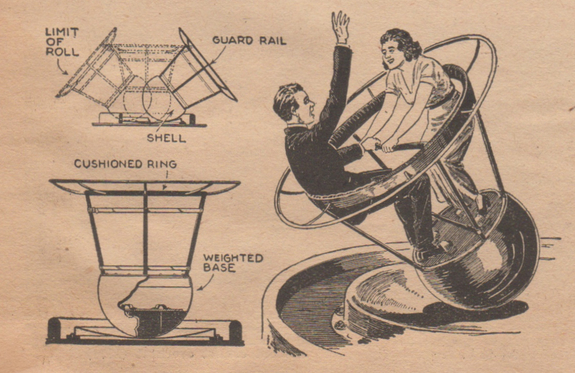Amusement park ride as imagined in the April 1935 issue of Everyday Science and Mechanics

If you’ve ever seen film of amusement parks from the first half of the 20th century, you’re likely to lose your lunch. Swirling and twirling and hurtling through space without a care in the world, rides used to look legitimately dangerous. Of course today, despite our modern safety regulations, there’s the occasional injury and even death. Still, those accidents are relatively rare and most people will take rides at major theme parks expecting absolute safety. The rides of yesteryear would likely shock the average 21st century thrill-seeker for their ability to maim—even when the rides were functioning properly.
This topsy-turvy roll-about was featured in the April 1935 issue of Everyday Science and Mechanics magazine—long before Disneyland and its many safety obsessed copycats would hit the scene. This “bobbing machine” amusement park ride was conceived by Herbert Rouenville of Copenhagen and was first patented in Denmark in 1932. Rouenville’s invention was granted U.S. patent 1,979,844 on November 6, 1934.
The idea is simple enough: you rock back and forth with a partner inside of a wobbly top, while the weighted base and its bowl-like station keeps you and your partner from tumbling over on your respective heads. I’m no safety expert, but I have my doubts that in this day and age—where experts are worried that we may be making our playgrounds so safe that kids aren’t learning about risks and the consequences of dangerous behavior—you’d be able to let the public partake in such a joyride. But I dare say that an adrenaline junkie of the early 20th century (or even daredevil Felix Baumgartner today) might tell us that a little danger is just what we need.





